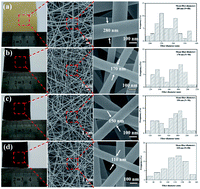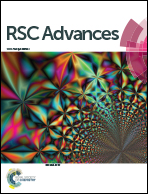Flexible anode materials for lithium-ion batteries derived from waste biomass-based carbon nanofibers: I. Effect of carbonization temperature
Abstract
Carbon nanofibers (CNFs) with excellent electrochemical performance represent a novel class of carbon nanostructures for boosting electrochemical applications, especially sustainable electrochemical energy conversion and storage applications. This work builds on an earlier study where the CNFs were prepared from a waste biomass (walnut shells) using a relatively simple procedure of liquefying the biomass, and electrospinning and carbonizing the fibrils. We further improved the mass ratio of the liquefying process and investigated the effects of the high temperature carbonization process at 1000, 1500 and 2000 °C, and comprehensively characterized the morphology, structural properties, and specific surface area of walnut shell-derived CNFs; and their electrochemical performance was also investigated as electrode materials in Li-ion batteries. Results demonstrated that the CNF anode obtained at 1000 °C exhibits a high specific capacity up to 271.7 mA h g−1 at 30 mA g−1, good rate capacity (131.3 and 102.2 mA h g−1 at 1 A g−1 and 2 A g−1, respectively), and excellent cycling performance (above 200 mA h g−1 specific capacity without any capacity decay after 200 cycles at 100 mA g−1). The present work demonstrates the great potential for converting low-cost biomass to high-value carbon materials for applications in energy storage.



 Please wait while we load your content...
Please wait while we load your content...